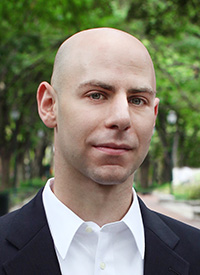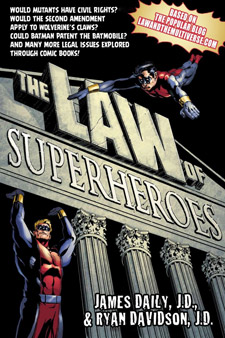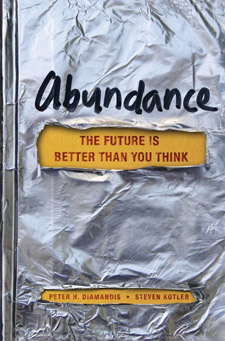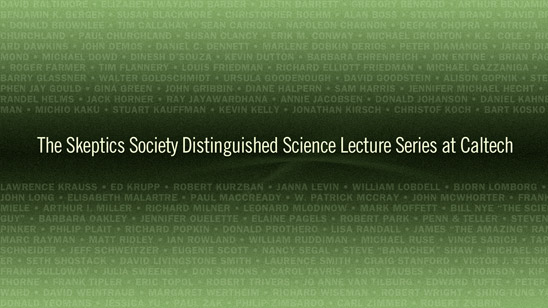In this week’s eSkeptic:

Superlaw!
SKEPTICALITY EPISODE 206
This week on Skepticality, Derek chats with James Daily and Ryan Davidson, the creators of the popular legal blog, Law and The Multiverse and the newly released book based on the site, The Law of Superheroes. If there’s one thing that many science and reality-minded people tend to do quite a bit, it’s over analyze every little detail in the movies, TV shows, books, etc., that they find entertaining. James and Ryan, being lawyers, decided to take that same mindset and explore what might happen, legally, if some of the fantastic things depicted in comic books and superhero entertainment actually happend in real life.
Get the Skepticality App
Get the Skepticality App — the Official Podcast App of Skeptic Magazine and the Skeptics Society, so you can enjoy your science fix and engaging interviews on the go! Available for Android, iPhone, iPad, and iPod Touch. Skepticality was the 2007 Parsec Award winner for Best “Speculative Fiction News” Podcast.

About this week’s eSkeptic
In this week’s eSkeptic, Dr. Edward Hudgins reviews two books: Abundance: The Future Is Better Than You Think, by Peter Diamandis and Steven Kotler and Merchants of Despair: Radical Environmentalists, Criminal Pseudo-Scientists, and the Fatal Cult of Antihumanism, by Robert Zubrin. Read Dr. Edward Hudgins’ bio at the end of the reviews.
It’s Getting Better All the Time
book reviews by Edward Hudgins
What does the future hold for humanity? One answer—an optimistic one—is outlined in these two volumes that come at the question from two perspectives. Abundance: The Future Is Better Than You Think, by Peter Diamandis and Steven Kotler, takes a purely positive perspective, while Robert Zubrin’s Merchants of Despair: Radical Environmentalists, Criminal Pseudo-Scientists, and the Fatal Cult of Antihumanism comes to its optimism by means of debunking the pessimists. As a bonus, both offer us components for a new Enlightenment synthesis that can usher in profound cultural changes well beyond the particulars in the pages of these books.
Interestingly, both Diamandis and Zubrin are prominent new space advocates who see a future for humanity in the heavens. Diamandis heads the X-Prize project. It offered $10 million to the first private party to build a reusable vehicle capable of carrying three humans into space twice in a two-week period. Burt Rutan’s SpaceShipOne won that prize in October 2004. Since then entrepreneur Richard Bransen has created Virgin Galaxy to use Rutan’s systems to provide commercial sub-orbital flights. In 2009 Diamandis partnered with futurist Ray Kurzweil to found Singularity University, which seeks to leverage the power of exponential technologies to meet humanity’s grand challenges. And in 2012 he co-founded Planetary Resources Inc. with space entrepreneur Eric Anderson, Google’s Eric Schmidt and Larry Page, and filmmaker/explorer James Cameron, dedicated to mining asteroids.
Dr. Zubrin, with degrees in aeronautic, astronautics, and nuclear engineering, founded the Mars Society in 1998 to promote the exploration, settlement and, ultimately, terraforming of the Red Planet to make it into another habitat for humanity. His innovative mission model potentially would allow humans to visit Mars for a fraction of the cost projected by NASA. Zubrin has also written on energy policy and even penned a sci-fi satire.
Abundance is Possible
Let’s start with the thesis of Abundance:
Humanity is now entering a period of radical transformation in which technology has the potential to significantly raise the basic standards of living for every man, woman, and child on the planet. Within a generation, we will be able to provide goods and services, once reserved for the wealthiest, to any and all who need them.
Abundance highlights advances in a number of sectors and technologies that the authors argue will work together, create synergies, and leverage one another to propel the world into an era of plenty. The authors attempt to demonstrate that building on the still-in-full-force information and communications revolutions, innovations in areas like healthcare, energy, education, robotics, and food production will yield double dividends. This, they explain, is because those innovations will allow for what F.A. Hayek called catallaxy, that is, the ever-expanding benefits of division of labor; Hayek himself applied this term to pricing, resource allocation, and all market activities. Diamandis points to three forces that, at this point in history, make exponential material progress possible.
First is the Do-It-Yourself revolution. For example, most Americans know of the late Steve Jobs, who co-founded Apple Computer, operated it initially out of his parents’ garage, challenged the IBM-Big-Mainframe model, and transformed the communications and information sectors. Diamandis himself helped spur the private, low-cost commercial space revolution with the X-Prize. And Craig Venter tied the big-budgeted U.S. government in the race to decipher the human genome.
A second force is generous financial support from such techno-philanthropists as Microsoft co-founder Bill Gates, Facebook creator Mark Zuckerberg, and PayPal co-founder Elon Musk; the latter now heads SpaceX, which has sent two private rockets to the International Space Station. Such techno-philanthropists are funding many of the innovations that will create the prosperous world of tomorrow.
A third force is the bottom billion, the poorest of the poor who are finally plugging into the global economy thanks to the communications and information revolution and huge drops in transportation costs. Their talents and efforts are contributing to that economy of which they are also the major beneficiaries. They are becoming what Diamandis calls the “rising billion.”
With the thesis that global abundance is now possible thanks to these forces, Diamandis and Kotler turn to the revolutions in particular areas.
Drinking Water
It is estimated that the bacteria in contaminated water that causes diarrhea alone accounts for the deaths of 1.8 million children annually. So the authors introduce us to Dean Kamen, best-known as the inventor of the Segway, which we see scooting around city streets and factory warehouses. But he is also tackling the challenge of bringing potable water to the bottom billion. Kamen needed to create a device that not only could filter virtually any liquid, no matter how contaminated, into drinkable water but also that could operate in parts of the world where electrical outlets are a rarity. So Kamen employed an engine that in a pinch could even run on animal dung. The filtering device had to be small, like a mini-fridge, and rarely need repairs since obtaining spare parts in the least-developed parts of the world is often impossible. And the device had to be affordable.
Kamen created the “Slingshot,” which can produce 250 gallons of clean water per day. The cost of making a prototype was about $100,000, but with mass production he figured the device, including its engine, would cost about $5,000, with a five-year operating life. Still, even $5,000 is too pricy for the poorest of the poor. But Kamen is teaming up with Coca Cola to help build, distribute, and use its supply chain—the largest in Africa—to help maintain the Slingshot.
Health
Diagnosis is the sine qua non for any medical treatment. In the developed world the all-important X-ray is easily available, but involves quarter-million dollar machines the size of dishwashers. The authors introduce us to Carlos Camera, a UCLA grad student researching materials properties who made an important discovery. Pull a piece of scotch tape off of a roll in a dark room and you see it gives off a glow. Camera found that those little flashes, called triboluminescence, contain X-rays. So Camera teamed up with entrepreneur Dale Fox to found Tribogenics to develop the smallest and cheapest X-ray devices based on this principle. Soon poor Africans might have in their reach tools for diagnosing injuries and illnesses.
Diamandis and Kotler also introduce us to entrepreneur George Whitesides, whose long-term goal is “zero-cost diagnosis.” Here is one of his inventions to help bring this about:
A piece of paper about one centimeter on a side, able to wick fluid. Place a pinprick of blood or a drop of urine on the edge of Whitesides’s paper, and the fluid soaks in, migrating through the fibers. A hydrophobic polymer printed on this paper guides the fluids along prescribed channels, toward a set of testing wells, wherein the sample interacts with reagents, turning the paper different colors … brown in the presence of sugar … blue in the presence of protein.
The authors give us other examples of technology that not only will help the bottom billion but can deliver to those lucky enough to live in advanced counties better healthcare as well.
Education
In the chapter on education Diamandis and Kotler don’t introduce us to new killer-app inventions but, rather, show us how laptops, tablets, the Internet, and the other components of the communications and information revolution are revolutionizing teaching and learning.
The authors explain that today education in the developed world is a legacy of the 19th century Industrial Revolution. That model had teachers inserting knowledge in one-size-fits-all assembly-line style into the heads of students as they moved from one classroom to another. But while this approach brought basic literacy and knowledge to millions of people in the past, it neither reflects how children actually learn nor prepares them for a world in which information relevant for their lives is changing at an ever-increasing rate.
To show us how to think about education, the authors introduce us to Sugata Mitra, a physicist in India who got interested in education. A thick wall separated his office building from a nearby impoverished slum. So he devised an experiment:
He cut a hole in the wall and installed a computer with a track pad, with the screen and pad facing into the slum. He did it in such a way that theft was not a problem, then connected the computer to the Internet… The kids who lived in the slums could not speak English, did not know how to use a computer, and had no knowledge of the Internet, but they were curious. Within minutes, they’d figured out how to point and click. By the end of the first day they were surfing the web and … teaching one another how to surf the web.

Abundance: Why the Future Will Be Much Better Than You Think (DVD)
Since the dawn of humanity, a privileged few have lived in stark contrast to the hardscrabble majority. Conventional wisdom says this gap cannot be closed. But it is closing—fast. According to the X-Prize creator and entrepreneur Peter H. Diamandis, we will soon be able to meet and exceed the basic needs of every man, woman and child on the planet. Abundance for all is within our grasp through four forces: exponential technologies, the DIY innovator, the Technophilanthropist, and the Rising Billion. Diamandis establishes hard targets for change and lays out a strategic roadmap for governments, industry and entrepreneurs, giving us plenty of reason for optimism.
This lecture took place at Caltech, hosted by the Skeptics Society on February 26, 2012.
Mitra followed through with similar experiments, seeking to understand what students could learn and retain on their own, with minimal encouragement and guidance. The answer was, a lot! The authors offer us insights concerning how technology can transform education in both the developing and developed world. Most important, they show us that education, to be effective, must be tailored to the individual student.
Entrepreneurial Drivers
We glean three important insights from the review by Diamandis and Kotler of innovators and their innovations.
First, respect for the power of human reason gives us an almost infinite capacity to change the world for the better. The pre-modern and post-modern ideologies hold that humans are ultimately ignorant and impotent in the face of divine providence or the forces of nature. This erroneous philosophical assumption has no place in the abundance worldview.
Second, individuals are the driving force behind human progress. It’s Gates, Jobs, Zuckerberg, Venter, Kamen, Camera, Whitesides, Mitra, Rutan, Musk, Kurzweil, and a long list of others—not impersonal social forces—who make the difference between poverty and abundance.
Third, the individuals creating the world of abundance love their work. Yes, they say that they work for the good of humanity and a more prosperous world for all is certainly the result of their efforts. But it is their love of meeting impossible challenges, challenges that call on the best within them, that really motivates them and that deserves our emulation.
Environmentalist Fallacies
Arguably, the most serious concern about the abundance scenario is the authors’ views about environmental problems. They begin the book by citing the prediction of the English thinker Thomas Malthus (1766–1834) that while production grows linearly, population grows exponentially. This means that as human populations grow, there will inevitably be shortages. Populations must be limited because resources are.
Fast-forward to 1968 and we find Paul Ehrlich predicting in The Population Bomb that decades hence will find millions of dead bodies in the streets as humans run out of resources to exploit. In 1972 the Club of Rome published The Limits of Growth as a clarion call to recognize that resources and, thus, human progress are limited and that we must resign ourselves to lower living standards.
Diamandis and Kotler say that while many of the Malthusians’ “more dire predictions have failed to materialize, for the most part the years haven’t softened the assessment. Today we are still finding proof of … [their] veracity most places we look.” But the thesis of Abundance is that technology offers a way out of the Malthusian dilemma and the other concerns of environmentalists.
Perhaps we should assume that the authors are saying “all other things being equal, Malthus is right, but all other things are never equal, thanks to technology.” Or one might simply argue that the revolutions the authors highlight are good in any case even if one rejects Malthusian and extreme environmentalist assumptions and fears. But there are very serious dangers lurking in those assumptions and fears that today are undermining the vision of a bright future that the authors see as possible.
Zubrin vs. Malthus
Here we turn to Robert Zubrin’s book Merchants of Despair. Zubrin’s thesis is that two diametrically opposed views of human beings are in conflict in our world today. One is that humanity is “something precious, worth protecting and fighting for.”
Starting with the Biblical idea of the human spirit as the image of God, taken forward by Renaissance humanists defending the dignity of man, our greatest thinkers developed a concept of civilization dedicated to human betterment and “unalienable rights” among which are “Life, Liberty, and the pursuit of Happiness…”
He contrasts this view with the one expressed in a Club of Rome report, that “The World Has Cancer and the Cancer Is Man.” Zubrin explains that according to this view, humans are “a horde of vermin whose unconstrained aspirations and appetites are endangering the natural order. This is the core idea of antihumanism.” The consequence of this view is that “One does not provide liberty to vermin. One does not seek to advance the cause of cancer.”
Zubrin argues that Malthus was not simply speaking as a scientist conveying the unfortunate fact that population always outstrips food supplies and, thus, will be limited one way or another. Malthus was attacking the Enlightenment notion that “human liberty, expanded knowledge, and technological progress could ultimately make possible a decent life for all mankind.”
Zubrin next turns to a review of the assault on humans unleashed by what he calls “Darwinism.” Charles Darwin himself described how the process of natural selection and the struggle for survival explains the emergence of various species. But as Zubrin explains, “this purported universal law of nature when applied to human affairs leads to wildly incorrect conclusions … and catastrophically unethical policies.” Zubrin is clear that he accepts evolution as a fact; he’s no Creationist. He might, however, be open to criticism for the constant use of the term “Darwinism.” Today Creationists, who are enemies of science and reason, focus on the unsound ideas and immoral policies—documented by Zubrin—that were promoted in the past as extensions of evolution. Then, in an intellectually dishonest move, these Creationists suggest that these ideas and policies discredit the fact of evolution itself.
But Zubrin’s discussion is of more than antiquarian interest. First, the essence of the antihuman idea perpetuated by the Darwinists was placing the group above the wellbeing of individuals, an idea that’s still very much a threat to humanity today. And second, many of the very individuals who promoted the mistaken applications of Darwin’s insights later went on to found and to influence major parts of today’s environmental movement. Zubrin reviews the well-known horrors of Nazi eugenics and the attempts to create a Master Race on piles of human corpses, done in the name of Darwin. What is eye-opening is Zubrin’s documentation of how many prominent individuals in Western Europe and America also were seeking a better race at the expense of the individual before this goal was discredited by the Nazis. Progressive president Teddy Roosevelt, for example, argued that in Europe “the amount of Nordic blood in each nation is a very fair measure of its strength in war and standing in civilization.” And he argued that “It has taken us fifty years to learn that speaking English, wearing good clothes and going to school and to church does not transform a Negro into a white man.”
Zubrin writes of institutions and their backers seeking a superior race justified on Darwinian grounds. In 1894 the Immigration Restriction League was founded to keep “undesirables” like Jews and southern Europeans out of America. In 1905 the American Breeders Association, dedicated to producing better dogs, added a human genetics section. The second and third International Eugenics Congresses were held at the American Museum of Natural History; Henry Fairfield Osborn, the museum’s long-time president, arranged those meetings. The Eugenics Record Office was founded in 1910 and funded by the famous Harriman and Rockefeller families; it advocated forced sterilization. Zubrin relates how even feminist icon Margaret Sanger promoted this policy. Zubrin explains “scientific error in ascribing human progress to natural selection of hereditary traits”:
Human beings, unlike other organisms, are capable of systematically passing on information through non-hereditary means, such as artifacts and words. … Because people can use their minds to create novel adaptations varying from technological innovations to better forms of social organization, human progress is chiefly governed by what people accomplish during their lives, rather than chiefly through the process of their winnowing out by death.
Too Many People?
After World War II, many of those involved in the eugenics movement, rather than acknowledging their errors, shifted their focus to controlling population size or to imbuing the environment with a value superior to humans. For example, Frederick Osborne, Henry Fairfield Osborne’s nephew, had been president of the American Eugenics Society and of the racist Pioneer Fund, which praised many Nazi policies in the 1930s. After the war he teamed up with John D. Rockefeller III to found the Population Council. In the decades that followed, they and others of their ilk spread the “people are pollution” dogma. As Zubrin explained, “Instead of seeking to rid the world of poverty, the new goal would be to rid the world of the poor.”
Population control became a centerpiece of American foreign aid. Funds were doled out to help countries not so much develop their economies, but to limit the number of their people.
Diamandis and Kotler rightly echo Zubrin in denouncing the attempts to control population by government, which often involved forced sterilizations and other such abuses. The Abundance authors argue, correctly, that as health improves in poorer countries, populations naturally stabilized. Parents are assured that most of their children won’t die before adulthood, that they will have offspring to take care of them in their old age, and thus they don’t need large families. But Zubrin would argue that Diamandis and Kotler need to appreciate what motivates many in the population control and environmental movements. For example, Paul Ehrlich stated that:
A cancer is an uncontrolled multiplication of cells; the population explosion is an uncontrolled multiplication of people. … We must shift our efforts from treatment of the symptoms to cutting out of the cancer. The operation will demand many apparently brutal and heartless decisions. The pain may be intense.
When he advocated forcibly sterilizing every man in India with over three children, he said “Coercion? … Perhaps, but coercion in a good cause.” One can hardly think of a more Malthusian moral monster than Ehrlich. Yet he is still treated with adoration by many environmentalists today and even received a MacArthur Foundation genius grant in 1990, decades after his failed Population Bomb predictions.
Antihuman Environmentalism
Zubrin reviews a number of hot button concerns of environmentalists. He does not criticize those environmentalists who wish to reduce real and measurable threats to the lives and health of humans from, for example, polluted air or water but, rather, those who would prefer to reduce the lives and health of humans.
Zubrin shows that one of the greatest boons to humanity was DDT, which was utilized as an insecticide starting in the 1930s. During World War II it was credited with saving tens of thousands of lives by killing lice and other vermin. In subsequent years it saved millions of lives in India, South Africa, and many other countries. For his role in adapting its use for public health, Paul Müller won the Nobel Prize for Medicine in 1948.
But Zubrin shows us how many environmentalists raised their voices in opposition. Most notably, in Silent Spring, published in 1962, Rachel Carson offered scientifically unsound hysteria that became a cause célèbre for the environmentalists. Even though no studies have shown DDT to be a major danger to birds, as Carson contended, much less humans, American politicians worked to ban it and to promote the ban in other countries. Zubrin says perhaps 100 million died in subsequent decades, mostly in Africa, because of restrictions on DDT.
Zubrin reviews the “Green Revolution” that started in the 1950s. Its hero was Norman Borlaug who, with his team, produced genetically modified strains of wheat and rice that could grow in a wider variety of environments and increase crop yields many-fold. Countries like India were finally able to feed their people. But many environmentalists were not celebrating this incredible achievement. Zubrin contends that their opposition to such crops was not based on any scientifically demonstrable health hazards; indeed, if the options are either starving or eating something that might bring a minor disease risk increase, it’s an easy choice. Rather, it was from a deep-seated antihumanism.
Because the documented benefits of such crops were clear and the downsides non-existent, Zubrin argues that opponents offered a bit of intellectual flimflam known as the “Precautionary Principle”: No invention should be permitted that cannot be proven in advance to be completely harmless. By this criterion, virtually none of the products, innovations, and technology that make up the modern world would have been allowed. Indeed, the fires lite by the first cavemen would have been quickly stomped out.
Zubrin similarly examines the environmentalist opposition to nuclear power, which he argues is an inexpensive and safe alternative to fossil fuels. For motive, he quotes Ehrlich, with Richard Harriman, saying “Power is too cheap. It should certainly be made more expensive and, perhaps, rationed, in order to reduce its frivolous use.”
Zubrin also examines the global warming controversy. He concedes that in the past century there has been a small amount of warming, that CO2 is a likely culprit, and that humans played a role. But he argues that over many centuries and millennia the climate has changed radically, without the help of humans and without destroying humans. He contends that warming is slowing and that the adverse effects on humans of proposed policies to slow it further would dwarf the alleged adverse consequences of warming. Again, Zubrin tells us that for many environmentalists, “The cure of choice for global warming is human sacrifice.”
In all of the cases Zubrin reviews, one could argue that individuals sought to protect humans from harmful technologies, products, or practices. No doubt this is what many rank-and-file environmentalists believe. And it is always risky to ascribe to individuals insidious motivation rather than honest error. Some readers will be put off by the moral damnations that Zubrin offers. But Zubrin allows many of his subjects to damn themselves in their own words and their callousness toward individuals—sterilization, starvation—that cannot be excused as innocent. And he might have pointed to recent calls for radical reductions in population as evidence of the accelerating erosion of humanist values.
And there are those today who grant intrinsic value to nature apart from its value to humans—valuing a forest because we enjoy its beauty or harvest its trees for lumber. This implies nature has “rights” and that we humans must sacrifice our own wellbeing lest we violate them. That is antihumanism. Zubrin challenges readers to examine closely their own beliefs.
A New Enlightenment
This brings us back to the thesis of Abundance and the unquestioned philosophical assumptions and values held by the inquirer wishing to know if humanity’s material future is bright or bleak. Diamandis and Kotler persuade us that prosperity is possible and inspire us with examples of those who are creating such a benevolent world. But they would be wise to heed Zubrin’s warnings of the antihuman ideology in the environmental movement. To overcome this ideology, these authors should understand that human well-being must be the beacon for guiding all value judgments and that the human unit is not the group but the individual. Zubrin is right that “Human beings, on balance, are creators, not destroyers.” That’s how Diamandis and Kotler see the “bottom billion” who they want to empower to rise and flourish rather than to kill off. Indeed, to be a human is to create the means of one’s physical survival and spiritual wellbeing.
We see in the optimism of Diamandis and Kotler, and in the insistence by Zubrin that we must always put humans first, the elements of a new Enlightenment synthesis that can take up where the first Enlightenment left off that transformed the world over three centuries ago. ![]()
About the Author
DR. EDWARD HUDGINS is director of advocacy and a senior scholar at The Atlas Society, which promotes open Objectivism. Hudgins has worked as director of regulatory studies for the Cato Institute, as a senior economist at the Joint Economic Committee of Congress, and was both deputy director for economic policy studies and director of the Center for International Economic Growth at the Heritage Foundation. Books he has edited include An Objectivist Secular Reader, Space: The Free Market Frontier, Freedom to Trade: Refuting the New Protectionism, and two books on postal service privatization. Hudgins has a B.A. from the University of Maryland, an M.A. from American University, and Ph.D. from Catholic University in political philosophy. He has taught at universities in the United States and in Germany.
Our Next Lecture at Caltech:
DR. ADAM GRANT

Give and Take:
A Revolutionary Approach
to Success
with Dr. Adam Grant
Sunday, April 28, 2013 at 2 pm
IN THIS LECTURE, based on his book on the psychology of human interactions, organizational psychologist (and the youngest tenured professor at the Wharton Business School) argues that as much as hard work, talent and luck, the way we choose to interact with other people defines our success or failure. Give and Take demolishes the “me-first” worldview and shows that the best way to get to the top is to focus not on your solo journey but on bringing others with you. Grant reveals how one of America’s best networkers developed his connections, why a creative genius behind one of the most popular shows in television history toiled for years in anonymity, how a basketball executive responsible for multiple draft busts turned things around, and how we could have anticipated Enron’s demise four years before the company collapsed—without ever looking at a single number.
Followed by…
- Odd Couples: Extraordinary Differences between the Sexes
in the Animal Kingdom
with Dr. Daphne J. Fairbairn
Sunday, May 19, 2013 at 2 pm
New Admission Policy and Prices
Please note there are important policy and pricing changes for this season of lectures at Caltech. Please review these changes now.













